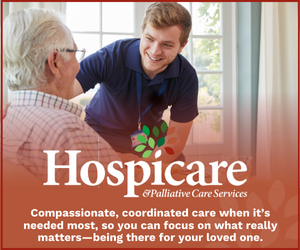(607NewsNow) — Hospice programs are designed to provide care to those facing end-of-life illnesses and offer support for such individuals’ families and caregivers.
The hospice philosophy is a relatively recent one, at least in the United States. According to Harvard Medical School, a growing number of terminally ill people were dying alone in hospitals in the 1970s. In response to that, the hospice movement began to offer services that would enable individuals to die free of pain and with dignity.
Hospice is fully covered by Medicare in the United States for all eligible patients and is covered by most Medicaid and commercial insurance plans. Canada has universal health care, which provides basic health services without user fees. Palliative care, which hospice care falls under, is a basic service in all provinces and territories, so it’s likely these services, when provided in a hospital, will be covered. Hospice care provided outside of a hospital in Canada may not be free of charge.
Choosing a hospice provider is an important decision. Depending on where a person lives, there may be a variety of hospice options, and each may differ in a number of ways, including quality of care. The following tips can help families as they seek hospice facilities:
· Start with a state or national website: Organizations like the National Hospice and Palliative Care Organization offer databases of hospice providers across the U.S. This enables families to filter their options by provider type as well as geographic location.
· Determine the care outcome: You can decide which type of services will be needed for your loved one. Hospice programs can manage pain and symptoms, provide drugs, medical supplies and equipment, teach family members how to care for loved ones, help with emotional and spiritual aspects of death, and provide services like speech and physical therapy. Identifying the desired course of hospice treatment ensures families ask the right questions when visiting facilities.
· Know the screening requirements: Ask about the qualifications of hospice workers and volunteers as well as the level and type of training they receive before being placed with families.
· Determine caseload and how busy the hospice provider may be: Some hospices assign a certain number of patients to each staff member, while others offer only one-on-one assignments. This can affect how flexible scheduling may be.
· Where does care take place: Hospice services may occur in hospitals, skilled nursing homes, private residences, or specialized hospice centers. Identify which scenario works for you and find services that align with it.
· Learn the reputation and read reviews of hospice providers: It may be easy to go with an initial recommendation, particularly when you want to offer fast relief to a loved one. However, families should read reviews and verify referrals before choosing a facility.
Taking the time to evaluate various factors pertaining to hospice care ensures that families choose a provider that emphasizes compassionate, high-quality care.




